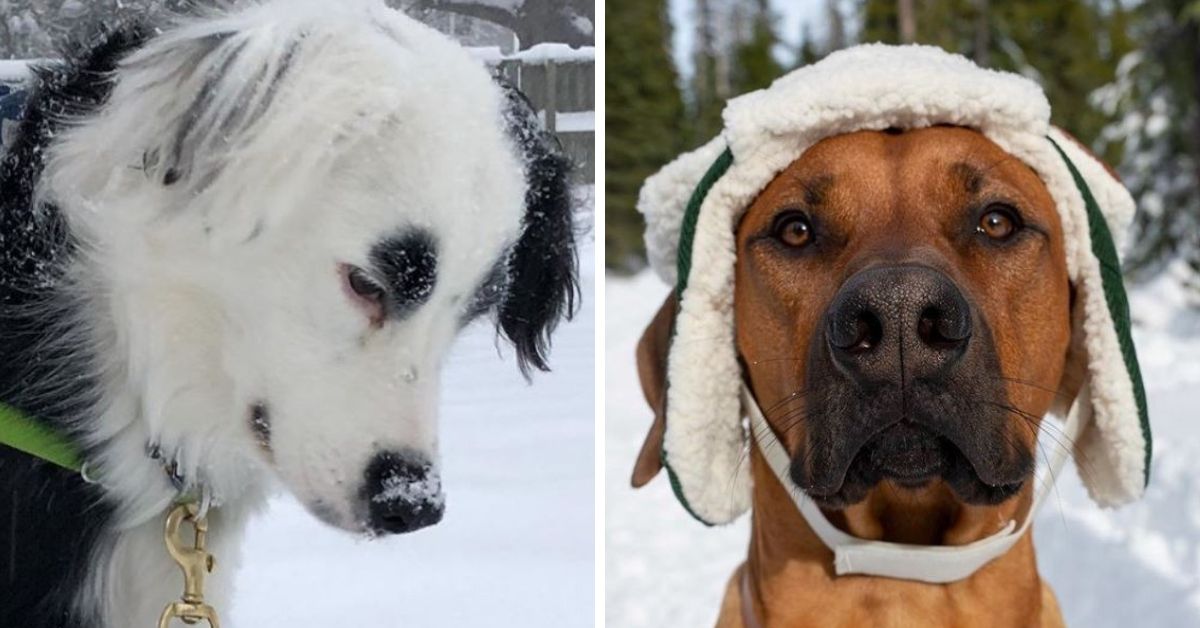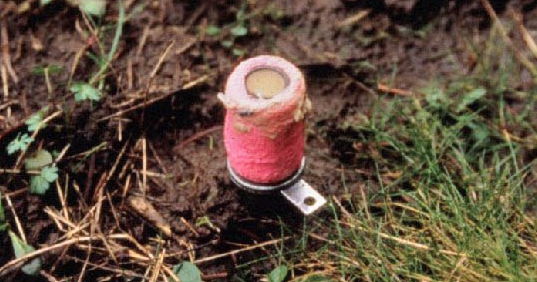Winter is obviously a bit of a pain in the butt for any of us who live somewhere that has snow. Every winter we get completely covered in inches of the annoying stuff, leaving us digging out our driveways, bundling up in big boots, and praying for it to be over soon.
But we aren't the only ones having to deal with it. Our dogs also experience these winters, and for them it might be even worse.
We only have to go outside to get to our cars, bus, or into a building, but our dogs have to go outside to go to the bathroom. I mean, sure, we have to take them out, but most of us bundle ourselves up really well before we do.
Our dogs are another story. Some people will get the booties and the coats and bundle up their pets, but others let them out there without any of that. Sometimes it's because they just don't think their dog needs it, and other times it's because their dog simply will not allow any of it to stay on.
I don't know about you, but arguing with my dog about little booties while I'm trying to get him out the door is not how I like to spend my mornings.
But how do you know when it's cold enough that the argument is worth it? How do you know when it's not safe outside for your beloved pup to brave the cold?
There are a few things you need to consider before you bring your dog outside in the cold:
Age
You dogs age affects their ability to regulate temperature. According to PetMD, both very young dogs and older dogs are not as capable at managing their temperature, so the colder (and hotter) temperatures affect them more severely.
Weight
A chunkier dog has a bit of an insulation layer of fat to them, which helps them keep a bit warm. Although, you do need to consider that just because your dog is overweight or obese, it doesn't mean they are immune.
Overweight dogs are more likely to get sick in other ways, and those health issues may affect their ability to moderate temperature.
Color
Interestingly enough, the color of your dogs coat can actually help them stay warmer in the winter. Dark-colored dogs are capable of absorbing heat from the sunlight, and this helps them stay warm. Light-colored dogs don't have that benefit so you may find your pups a little bit less inclined to spend a long time outdoors.
Type of Fur
This one is a bit obvious, but if your dog has short hair, it's not going to be as warm as a dog with long or fluffy hair.
A lot of the time, long-haired dogs like huskies have not only their fluffy outer layer of hair, but they also have an undercoat that gives them extra insulation. Sure, it's a pain when shedding season starts, but they are toasty through the winters!
Wind
Even if your dog has longer fur, a strong wind can cut right through all of it and leave them shivering up a storm. Consider the wind chill rating when you're going out, not just the base temperature.
Precipitation
If it's snowing, raining, or even if there just happens to be a lot of snow on the ground already, that's going to wet your dog's fur and make it harder for them to stay warm.
Clouds
If the sun isn't out, your dog, even if they are a dark-colored pup, won't be able to use the warmth of the sun to warm themselves up. So if it's a cloud day, keep an extra close eye on them.
Activity Level
If you're going out for a slow walk around the block and aren't really moving too quickly, your dog is going to get colder faster than a dog that is running around. Keeping them moving helps to keep their body temperature up, which will keep them warmer for longer.
Other things to know about your dogs in the winter:
Dog boots aren't just a silly trend, they actually help protect your dog
I know getting them on is a bit of a hassle, but between the cold ground and the salt used to melt the ice, there are a lot of things out there that may damage the sensitive paws of your beloved pooch.
Boots will help keep their feet safe and warm, but if they just absolutely will not put up with them, make sure you wipe down their paws when you come back in to get rid of any salt residue stuck between their pads.
Your dog may need a coat to go outside for longer periods of time
Even dogs with longer hair may benefit from a jacket. They can help protect your pup from the cold winds that can get under their fur, and also keep them dry.
Just be sure that the coat fits properly and does not impede their movement at all.
Some dogs do actually like the cold weather
While there are a lot of people telling you to keep your dog inside all winter, some dogs really do enjoy playing out in the snow.
Obviously you need to still keep an eye on them for any signs that they may have gotten too cold, but some dogs actually enjoy the chilly days and want nothing more than to roll in the snow.
Don't assume that just because a dog is out in the snow in your neighbors backyard that they are being mistreated. Sometimes they just refuse to come back inside! However, if you do see that the dog is clearly in distress, notify the proper authorities.
So how cold is TOO cold?
According to PetMd, the guideline for dogs is as follows:
- Below 45 degrees Fahrenheit / 7 degrees Celsius: Cold-adverse dogs may start to be uncomfortable
- Below 32 degrees Fahrenheit / 0 degrees Celsius: Smaller breeds and dogs with short/thin coats will start to feel cold. Keep a close eye one them for signs of distress.
- Below 20 degrees Fahrenheit / -6 degrees Celsius: Owners should watch for signs of distress in all dogs as the likelihood increases greatly at this point and obviously, continues the colder it gets.
Signs your dog is too cold:
While it may be hard to know exactly what temperature is too cold for your individual pet, you can learn how to recognize the signs that they are too cold.
- Whining or barking and other verbal clues will reveal when they have had enough.
- If they stop moving and playing, and holding their feet up off the ground they are getting cold.
- Dogs shiver when they get too cold just like we do.
- Anxious behavior increases when they are cold, they may try to climb up your leg or act nervous.
- Hiding under cars, trees, or anything that gives them a bit of shelter shows they are too cold and want to come in.
Source - American Veterinary Medical Association / PetMD / Cesars Way

